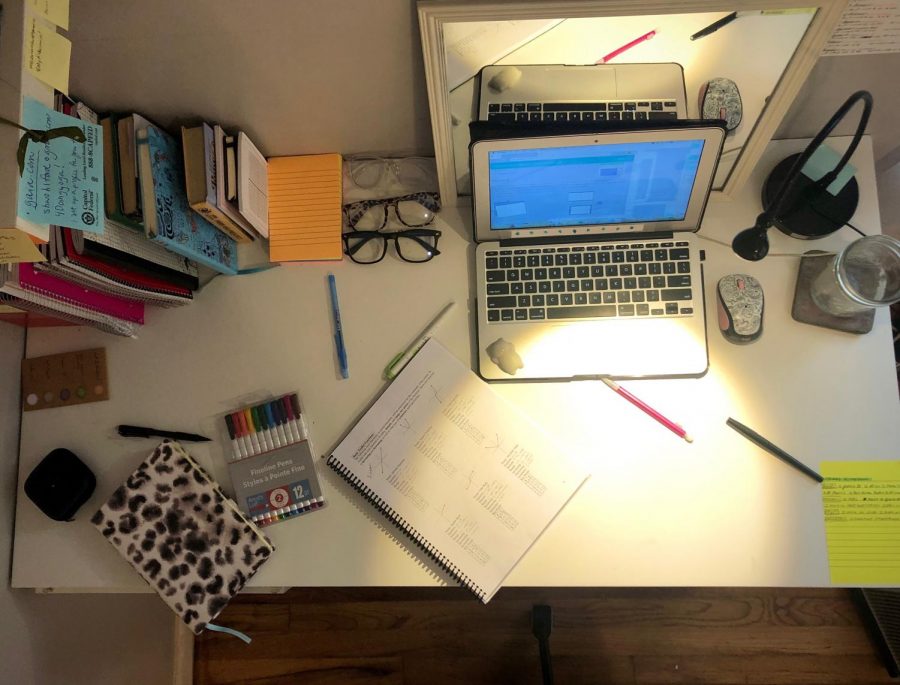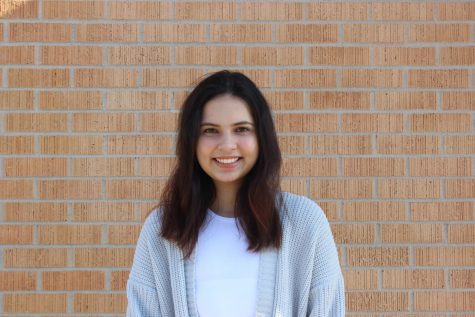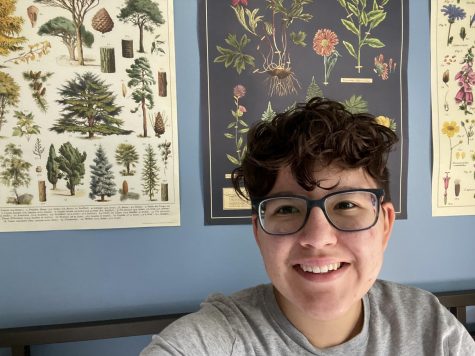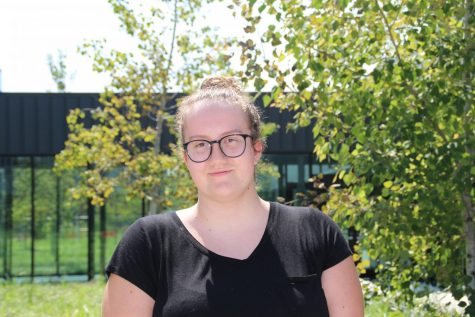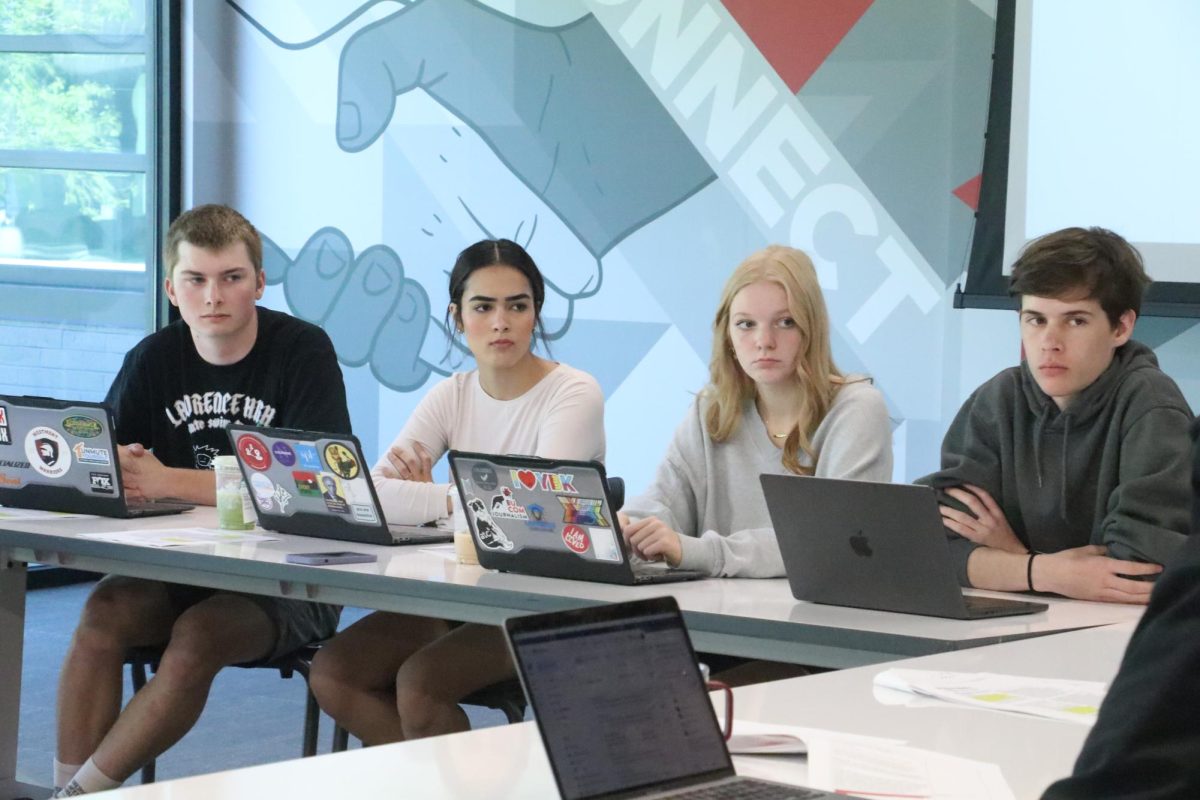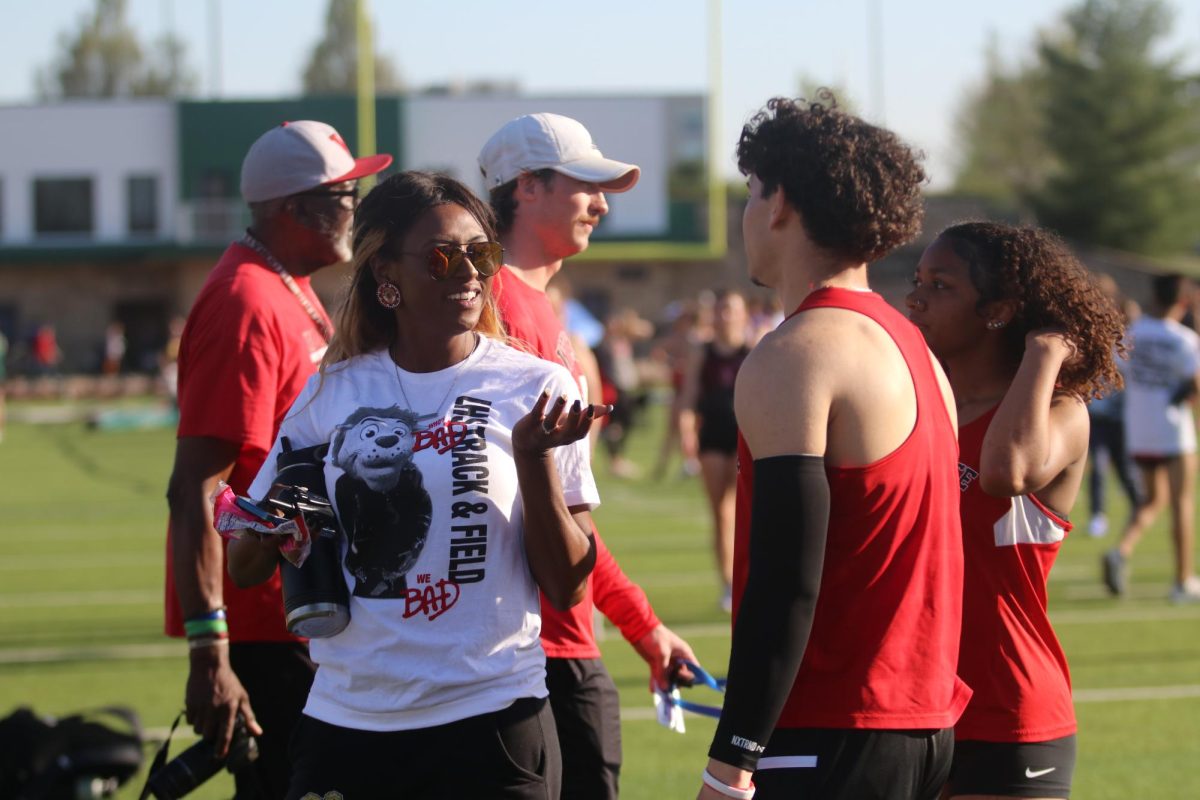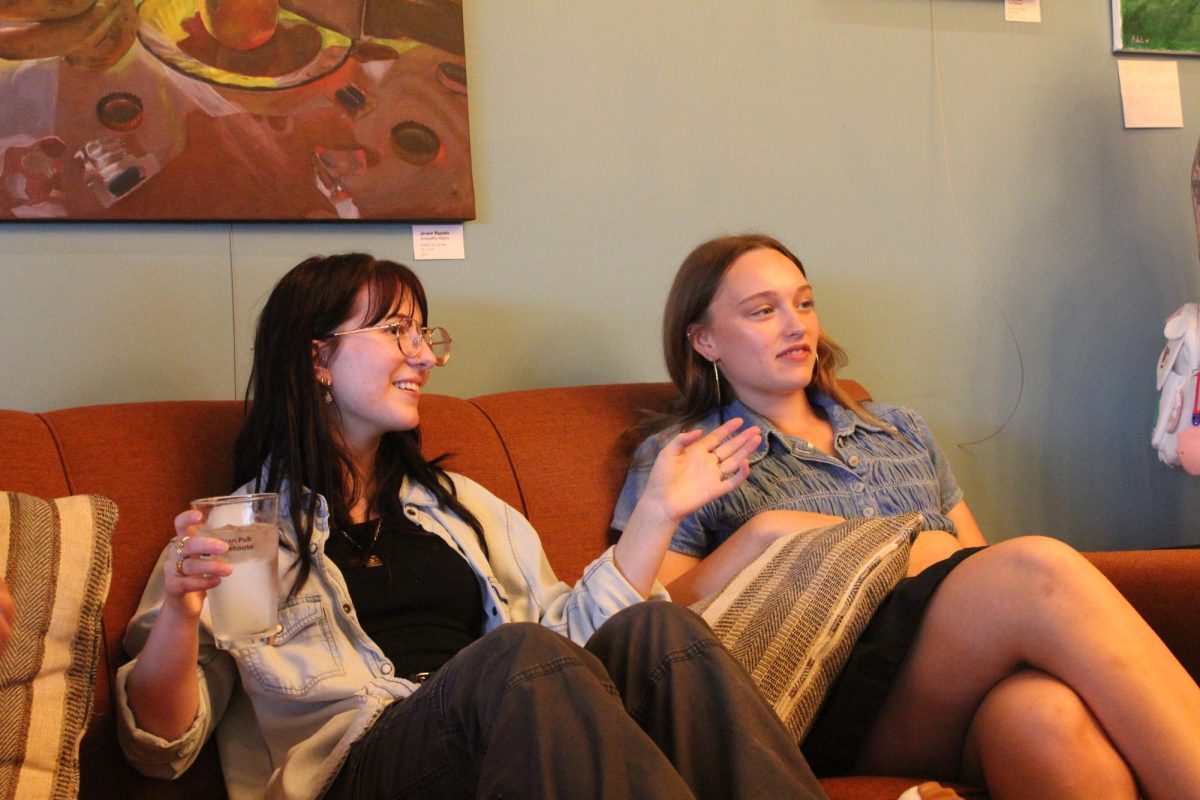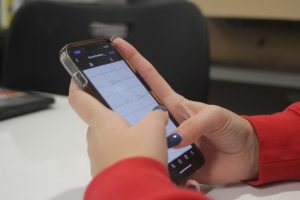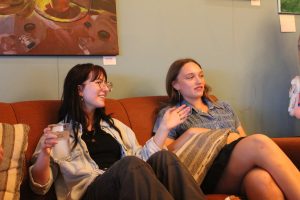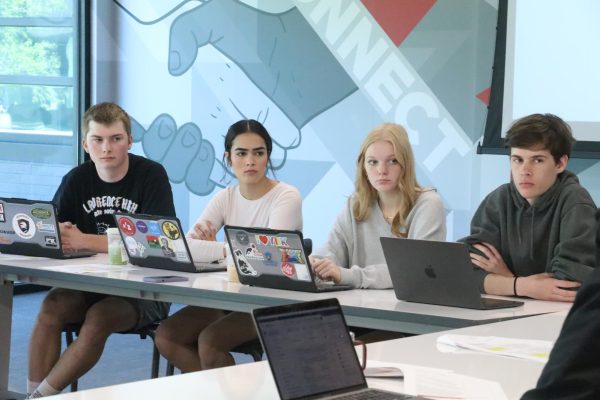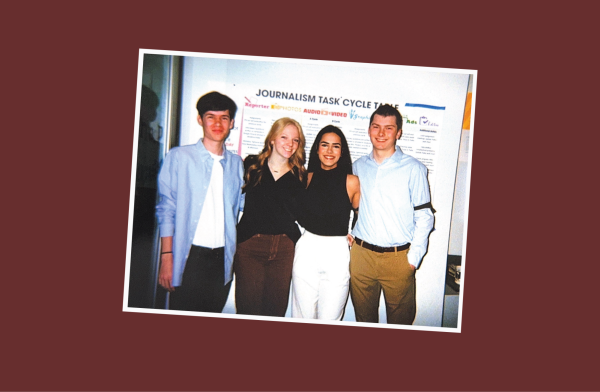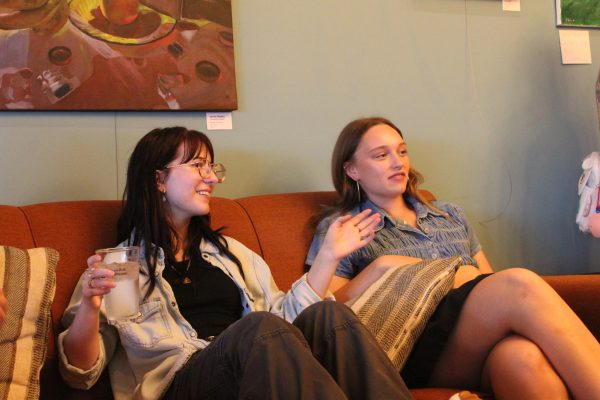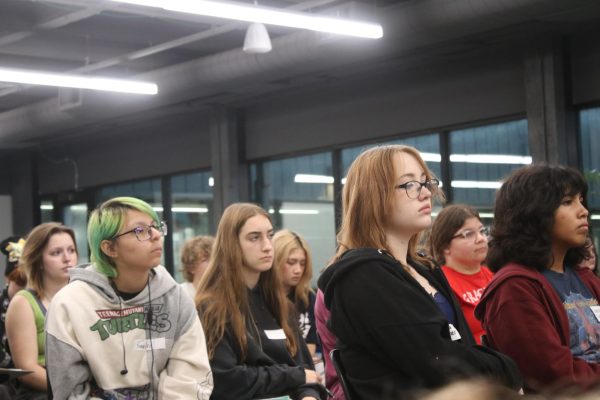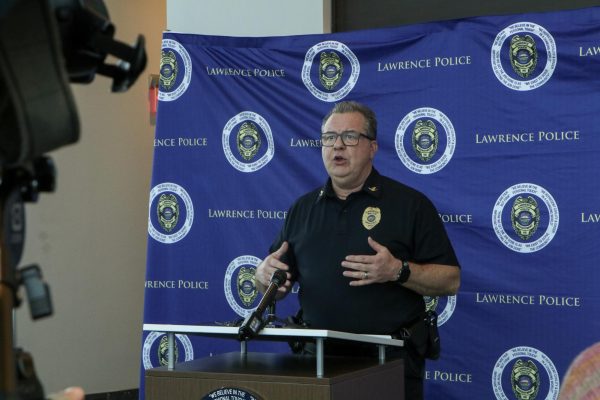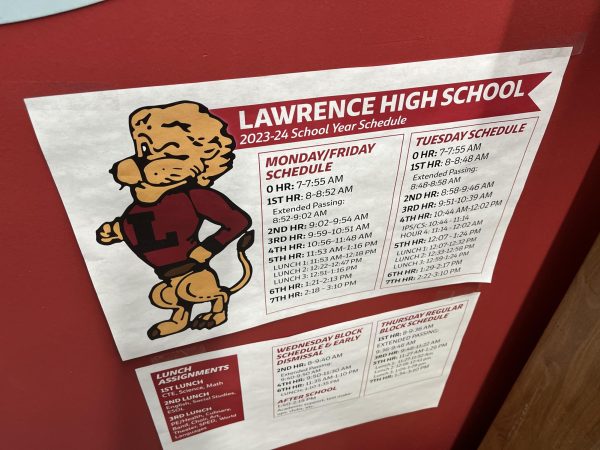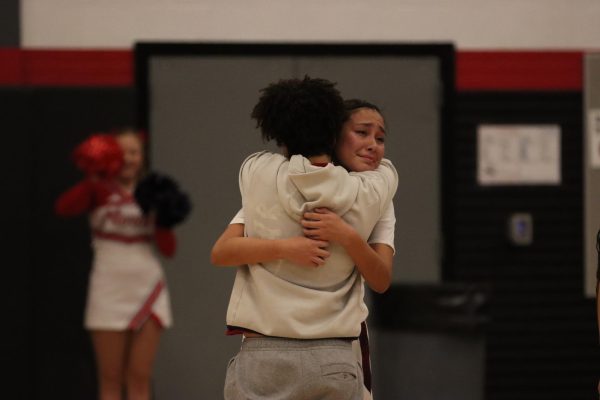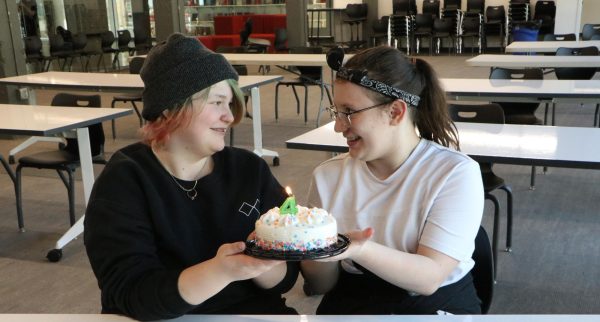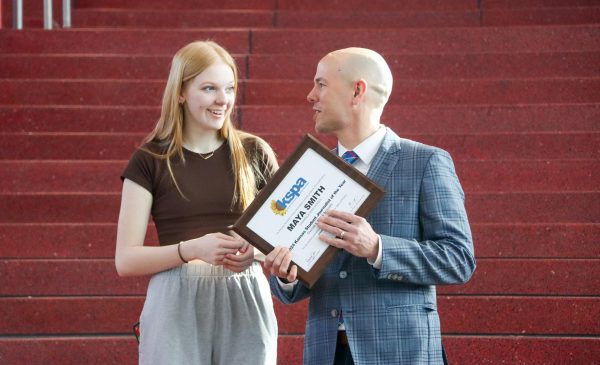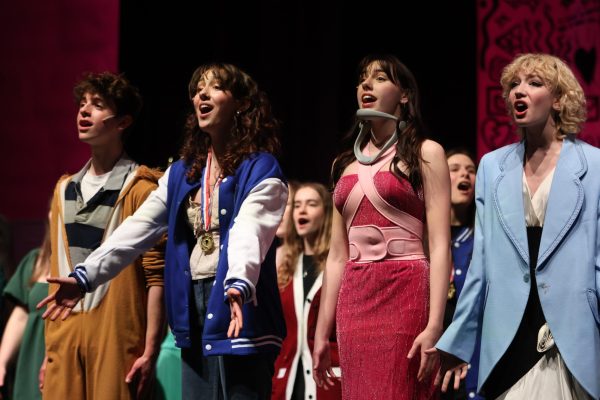Students express opinions over hybrid plan
A desk is left scattered with supplies needed to study in online school. Students will have the chance to return to campus for learning on October 19th.
October 9, 2020
High school students and parents received their first look at the final hybrid schedule on Thursday night.
The USD 497 school board voted in late September to move to a hybrid learning schedule after a seven-hour meeting, in which tensions ran high. This controversial decision led to negotiations meetings within the district, and a revision of the hybrid plan first proposed.
Students can choose to remain remote by filling out a form attached in the email from the district, as long as it’s completed by Oct. 15. It’s unknown at this point how many students will be choosing to stay fully online.
The finalized hybrid schedule will remain the same as the current remote learning schedule with the exception that Wednesday will be even shorter — ending just before 1 p.m. Starting Oct. 19, only students with connectivity issues will be returning to school, with the rest of the student body returning, sometime in mid November.
Students will only have in-person instruction once a week, with only 25 percent of students in the building at a time. When not in person, students will attend classes virtually. Wednesdays will be a fully remote day while the schools are deep cleaned.
There were many conflicting opinions among the student body about the implementation of the hybrid plan.
Junior Cassidy Dunn said this schedule fixes a lot of issues that were prevalent in the first schedule that was presented to the board, which called for four days of block-period instruction. In that model, half of students would have been in person for Mondays and Thursdays and the other half for Tuesdays and Fridays.
“At first I was kind of disappointed to find out we would only go to school one day a week instead of the initial plan of two, but I honestly think it’s a really good move safety wise because I feel a lot more comfortable going back with only 25 percent of the school instead of 50 percent,” Dunn said. “I also think it’s really good for bigger classes like choir because instead of having around 30 kids in the room, we will only have around 15, which I think is a lot safer. I also am glad we are doing 1-7 classes because I think it would be a struggle for most students to sit at the computer for a block schedule when the classes would be so long. Also, it is good for teachers to be able to check in with their students everyday instead of three days a week, which is what it would have been.”
Sophomore Luke Havener still has questions of how safe the hybrid model will be for students and teachers.
“I was a bit skeptical about the original model, and I think the new one seems like a smarter plan for keeping the school safe at first glance; however, I’m not sure how it will play out with keeping the school sanitized,” Havener said. “I still stand by my original opinion that normal school will always be better than any current option, and I think it would be smarter to just continue doing online school. The amount of learning you would gain from going to school for one day a week, and with everyone wearing masks and having to worry about sanitation etc, is incomparable to actual school.”
Junior Elyssa Hancock said that she wished they had kept the original schedule, with block days everyday except for Wednesdays and students in school two days a week.
“I preferred the block day hybrid model because it meant you only had three days at home instead of four, and it provided days where you don’t attend the same class consecutively,” Hancock said.
Junior Zoe Symons thinks that it will be easier to focus with all regular length classes, instead of the block days.
“I like it more because I think it will be easier to focus since the classes will be regular length and it will mean there will be less covid spreading,” Symons said. “I’m still debating going hybrid but I’m leaning towards staying online for the rest of the semester. The new model makes me want to go hybrid more than the old model did. My biggest concerns right now are that when schools open back up the cases will go up, also that kids won’t take wearing their mask seriously.”



